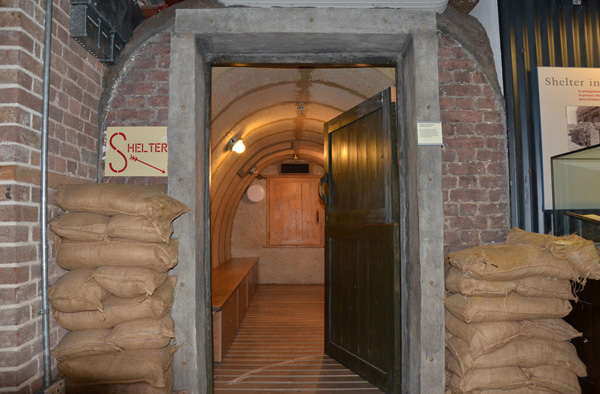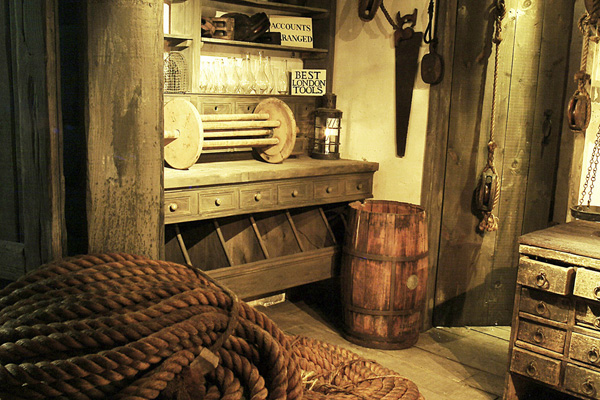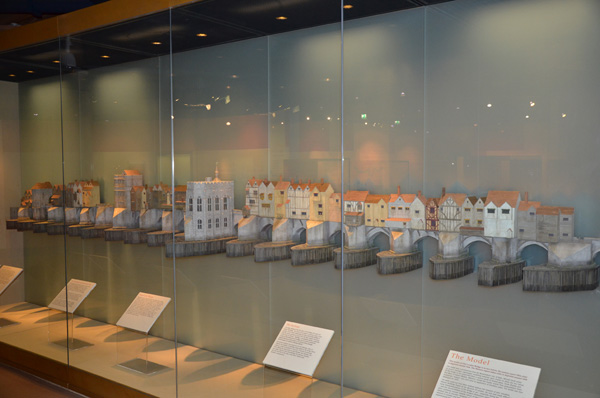The legend of London’s Docklands
05/09/2013
There is no better illustration of the English “Keep Calm and Carry On” ideology than at the Docklands Museum in East London. It tells the incredible story of how this area of the city developed, suffered in WWII and was then born again into a sought-after residential and business district
Those who have never had a chance to explore London might be forgiven for thinking it all looks like something out of a Guy Ritchie movie: cobbled streets and converted warehouses with a criminal underworld populated by quirky crooks who wear smart suits and drive classic cars. Well, two out of three’s not bad and it’s no coincidence that Mr Ritchie chose many locations in the ‘east end’ to create his iconic image of the UK capital.
East London, arguably the most historically enticing quarter of the UK capital, is generally regarded as anything to the east of the old financial district and the original City of London, or what’s often called the Square Mile.
It wasn’t far from here that the exploits of Jack the Ripper took place, in and around Whitechapel in 1888. Narrow Street was home to the infamous opium dens in the 18th Century, the docks were the epicentre of trade in London and the SS Great Eastern was built and launched at the south end of the Isle of Dogs peninsula.
Once the thriving industrial epicentre of the capital, rich in international trade and culture, it fell into disrepair after being heavily bombed during World War II. Much of Wapping and the Docklands district lay abandoned until the 1970s when rebuilding and reinvestment in the area began.
Warehouses were gutted and rebuilt, becoming sought-after residential conversions and huge areas of wasteland were transformed into what is now London’s new financial district. In fact, as the Docklands area was being reduced to rubble and rebuilt, it doubled as the bombed Vietnamese city of Hue in Stanley Kubrick’s 1987 movie Full Metal Jacket. Jean Michel Jarre famously played his open-air concert here in 1988 and One Canada Square – sometimes just referred to as Canary Wharf – has appeared in a number of movies and TV series, including The Bourne Supremacy, Harry Potter, Batman Begins and Dr Who.
A short walk from Canary Wharf, in an area called West India Quay, lies a long 19th Century Georgian warehouse that was once used to store imported goods from the West Indies like tea, sugar and rum. Inside this Grade 1 listed building today are bars, restaurants and the quite outstanding Museum of London Docklands.
Not only can you lose yourself in East London of yesteryear, sit inside a replica bomb shelter from the Second World War, meander through a mock-up of 18th Century streets, shops and taverns, but you actually begin to appreciate just how much history has unfolded along the banks of the River Thames and how important it was to the Great British Empire.
Londoners have endured a lot over the centuries – and nowhere more so than the east end, from the plague and the Great Fire, to the threat of invasion, terrorist attack and almost being bombed from existence in WWII. To see photographs of what the Docklands looked like 40 years ago next to images of what it looks like today still overwhelms me. On many occasions, the history that unfolded here affected the whole world; from the Greenwich meridian to the Wapping print revolution in the mid-80s – the first place in the world to pioneer publishing color newspapers.
Until the end of October, the Museum is currently displaying an installation called ‘Estuary’, in which contemporary artists explore London’s long relationship with all-important River Thames and in particular where the river meets the sea.
This subject has never been more relevant to any self-respecting Londoner as debate rages over how to cope with the ever-growing amounts of air traffic and the issue that Heathrow simply cannot cope. One proposal – and frankly the only one with a chance of success – is to move the UK’s biggest airport and the third busiest in the world from Heathrow in West London to the Thames estuary, either on the Isle of Grain, or to create a purpose-built airport island based on the extremely successful Hong Kong international airport, which opened in 1998.
However, the Thames estuary is also full of history. Huge, decaying, derelict hulks of history.
One such example is the Maunsell sea forts. These huge defense platforms were built in 1940 to defend the estuary from German mine-laying boats, submarines and more importantly air attack. There is now no way to measure the passive deterrent effect of the Maunsell forts, but during their short active life they destroyed 22 enemy aircraft and about 30 flying bombs. It was believed that a combination of bad weather and tidal action would quickly destroy them after the war, so no thought was taken for their disposal. During the Swinging 60s, they served as a base for a number of pirate radio stations, but today they serve mainly as inspiration to artists and writers, through film, photography and painting.
Another such example, is the SS Richard Montgomery, a cargo ship built in Florida to carry vital supplies for the war effort, was anchored in Sheerness, Kent, when it grounded and broke up in 1944. Three masts are still visible above the waterline signal its menacing presence – a decaying shipwreck packed with wartime bombs resting on a sandbank in a busy shipping route. This ticking time bomb has sat on a sandbank for over 70 years with 1,400 tonnes of explosives on board; it is monitored 24-hours a day by port authorities and protected by a 500m exclusion zone. Successive governments have wrestled with the problem of what to do with the wreck, which lies in 50ft of shallow water about 1.2 miles off the coast.
For me, East London is an attractive destination at any time of year, from strolling along the Thames in glorious July sunshine, walking through the April rain or even searching for a pub with an open fire in December. Granted, I’ve lived here for the last 10 years, but before me, members of my family had roots here and it’s easy to see why a connection is still sought and I will always call this historically and culturally rich region of the UK capital ‘home’.
The Estuary exhibition at the Docklands Museum lasts until the end of October. Entrance to the museum is free, although a small donation is very much appreciated.
Other East End claims to fame
Charlie Brown’s
The Railway Tavern was the pub’s official name, but it was universally referred to as Charlie Brown’s, after the owner. From 1893 until 1932 this was an extremely popular watering hole for sailors and dockworkers; the pub was a veritable museum of curiosities gathered from all parts of the world – this was where boys became men and tales were told of adventures around the world. Charlie died in June 1932 and thousands attended his funeral. The East London Advertiser reported that “[London] has rarely seen funeral scenes such as those which marked the laying to rest of Mr Charles Brown…who was often called the uncrowned king of Limehouse.”
Jack the Ripper
Still a mystery over 100 years after the events took place, Jack the Ripper is arguably one of the world’s most famous serial killers. This whole gruesome chapter of London life took place in 1888 in an area called Whitechapel and one of the many theories regarding this murderer’s identity suggests he was a senior surgeon at the Royal London hospital, also in Whitechapel.
The Blind Beggar
London’s most merciless gangsters, the Ronnie and Reggie Kray, made this Whitechapel pub famous when in March 1966, Ronnie shot and murdered George Cornell, an associate of a rival gang, as he was sitting at the bar. The hole is still visible in the wall, as a decorative frame has been placed around it. As West End nightclub owners, the Krays mixed with prominent entertainers including Diana Dors, Frank Sinatra and Judy Garland. They were much feared within their milieu, and in the 1960s became celebrities in their own right, even being photographed by David Bailey and interviewed on television.
Bomb site
The brilliant bombsight.org website allows you to see for yourself just how heavily bombed the East End of London actually was during the Blitz, from 7th October 1940 to 6th June 1941. You can even choose between viewing the results of the first night of the blitz, a weekly bomb census or an aggregate bomb census.
Photographs: The Museum of London Docklands, Scott Snowden


